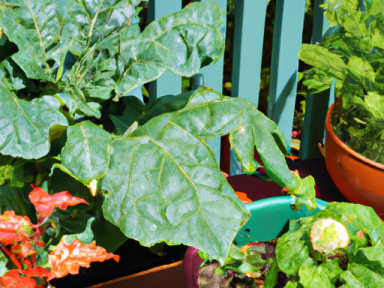During times of uncertainty, it is crucial to be prepared and self-reliant. One aspect of self-sufficiency that is often overlooked is growing your own food. Even if you have limited space, such as a small backyard or a balcony, you can still grow a bountiful vegetable garden.
Looking back at the Great Depression, when resources were scarce and people had to rely on themselves, we can learn valuable lessons about maximizing productivity in limited spaces. Here are some techniques used during that time that can be applied today:
1. Vertical Gardening
When floor space is limited, the best way to increase your growing area is by going vertical. Utilize trellises, fences, and walls to grow climbing vegetables like cucumbers, beans, and tomatoes. By training these plants to grow upward, you can save a significant amount of space.
2. Container Gardening
Containers are a fantastic option for those with limited space. You can grow vegetables in pots, buckets, or even old laundry baskets. Just make sure they have drainage holes. Container gardening allows you to move your plants around to optimize sunlight and create a visually appealing garden.
3. Intensive Planting
Instead of planting in traditional rows with wide spacing, consider intensive planting. This technique involves planting vegetables closer together to make the most of your available space. It not only increases productivity but also helps to shade the soil, reducing weed growth.
4. Succession Planting
With limited space, it’s crucial to keep your vegetable garden productive throughout the growing season. Succession planting involves planting crops in stages, so that as one crop is harvested, another is already growing in its place. This ensures a continuous supply of fresh produce and maximizes your harvest.
5. Companion Planting
Companion planting is a technique where certain plants are grown together because they benefit each other. For example, planting marigolds among your vegetables can help deter pests, while growing beans near corn provides natural support for the stalks. By utilizing companion planting, you can get more out of your limited space.
6. Vertical Hanging Gardens
If you have a balcony or limited floor space, consider utilizing hanging baskets or vertical gardening systems. These allow you to grow a variety of herbs, salad greens, and smaller vegetables by utilizing the vertical space available.
7. Utilize Small Spaces
No space is too small for a vegetable garden. Look for areas that are often overlooked, such as windowsills, balconies, or even vertical space on walls. You can grow herbs, microgreens, and even small root vegetables in these spaces, ensuring a fresh supply of nutritious food.
By applying these techniques, you can make the most of your limited space and grow a variety of vegetables to sustain you and your family. Investing time now in learning and implementing these methods will provide you with a valuable skillset for uncertain times. So don’t wait, start your vegetable garden today and embrace self-reliance!




GIPHY App Key not set. Please check settings